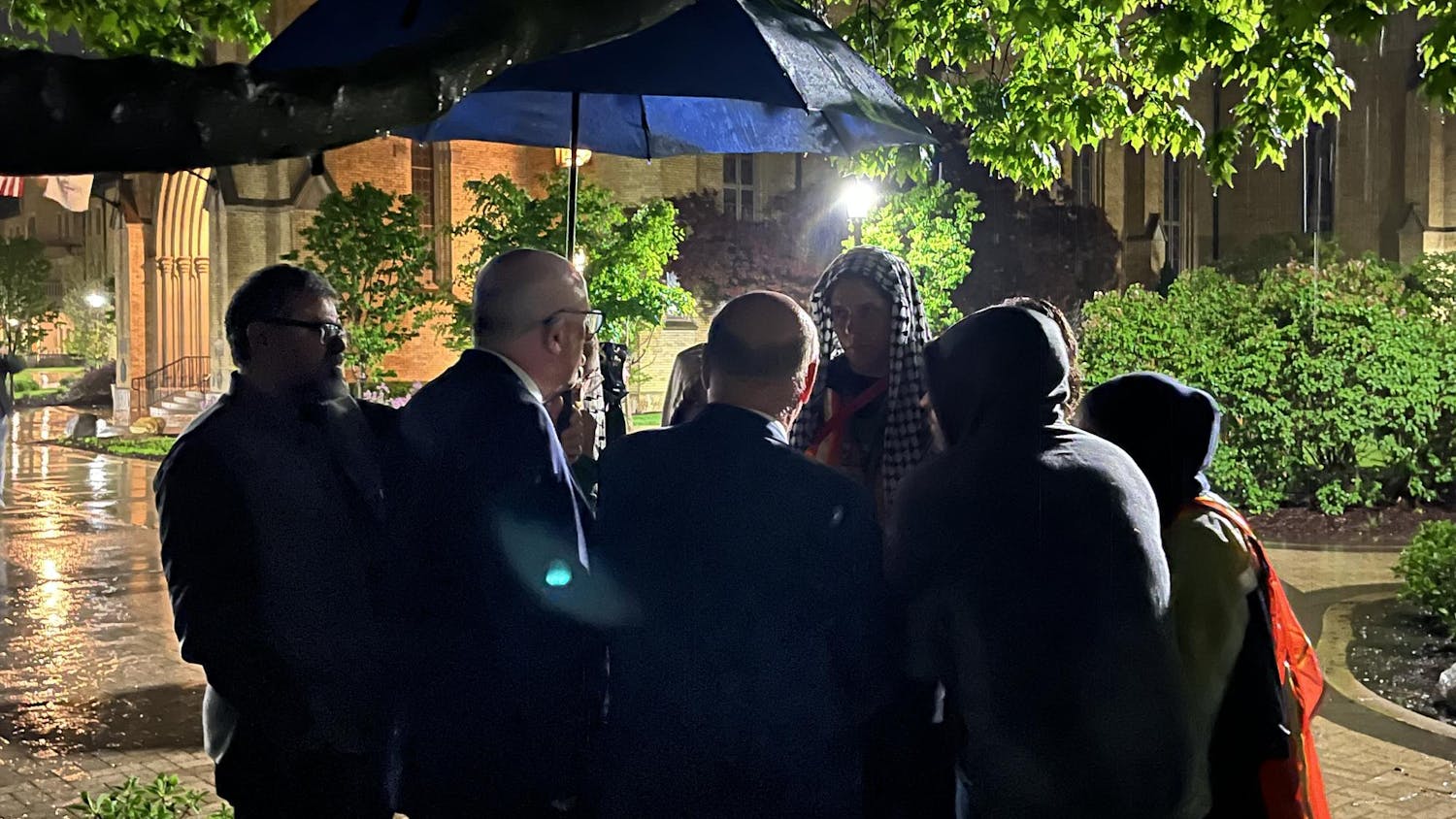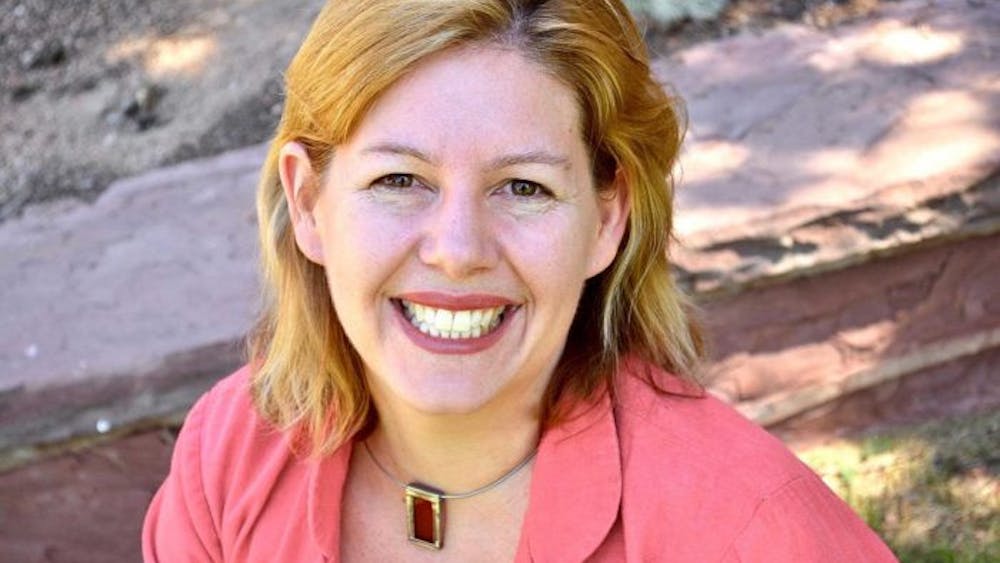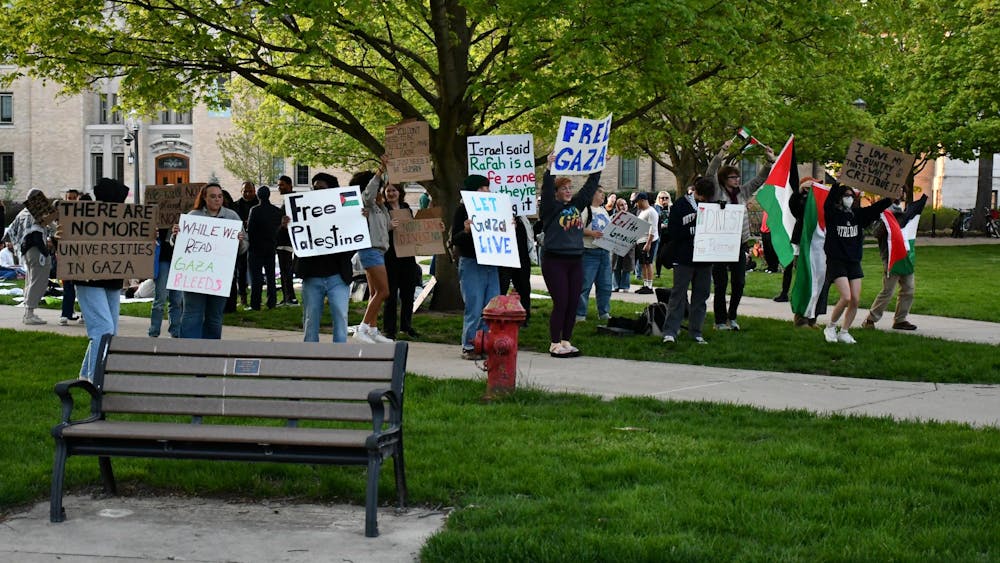Perhaps covering the murals, studying them elsewhere in reproductions, is the right thing. I cannot speak for Native Americans on this. I do know that when I brought a gentle Menominee friend of mine through the Main Building a few years ago, he couldn’t talk for a half hour. It was as if he had been assaulted.And no, Italian Americans: Columbus is not the greatest glory of Italian civilization, by a long shot. (Let’s learn more about Italian civilization).But there is a danger. Little drapes and fig leaves, trying to hide or efface problems, is usually easy, intellectually dishonest and self-defeating: A curtain hiding embarrassment reveals the embarrassment, along with the failure to face it. That would not be Ted Hesburgh’s way. The murals present lots of problems; a university with courage and intellectual vision faces them head on. Catholicism — and Notre Dame — has a deep, long, intricate relation to Native American history. Notre Dame stands on Potawatomi land. The murals clearly depict the patronizing and colonizing attitude the University had toward Native Americans. What the CSC thought of as loving Catholic concern in bringing salvation and civilization to the natives, is also clearly revealed — in the murals — as an alliance between church and state to dominate a people and a continent, never thinking to ask what a Native American could teach a (European) Catholic about civilization, about humanity, about the world and nature, about spirituality, about salvation. There is lots to learn here: Besides representing a failure of intellectual inquiry — the openness to learning from others — that must be at the heart of any real university, it also represents a failure of self-awareness — of love — that undermines any faith or culture that is dominant, or that thinks it alone possesses truth, understanding, morality, civilization. The murals are a salutary, constant warning to the Notre Dame community, to intellectuals, to Catholics, to Americans, now and in every generation.The murals are also a constant salutary reminder of Notre Dame’s responsibility to Native Americans, and of Notre Dame’s — and Catholicism’s — deep historic engagement with the Potawatomi. It is not all bad. Catholics were some of the fiercest denouncers of the injustices and abuse suffered by Native Americans. Fr. Stephen Badin deeply loved the Potawatomi he served, and they deeply loved him. When the government decided to forcibly remove the Potawatomi to the far West, essentially destroying their lives, Fr. Louis DeSeille and Fr. Benjamin Petit fought the government as long as they could, as Fr. Badin had before them. When they lost, Fr. Petit refused to abandon the Potawatomi: He wept with them and marched with them. Many died, especially the children. Fr. Petit died too. He was 27. Fr. Edward Sorin had him buried in our log chapel, along with Fr. Badin, who had built it. There’s a challenge: This is what faith, love, service and commitment look like in the face of injustice and oppression.And we’re going to put a little drape over all this, not think about any of it, not engage or learn from any of it?A curtain can be easy and cheap, both intellectually and financially. What a university with real vision, with real character, must do is face the challenge head on, to its core. It must foster the study of Native American culture, the civilization (and spirituality) we displaced, and Notre Dame’s — and Catholicism’s — own deep and revealing history of engagement with that culture. The encounter between Native American culture and European settlers is at the very heart of the entire American experience, of what we are, and the sins in it are the root of our sins now. Teach the history of that encounter. Found a Center for Native American Studies. Foster the study of Potawatomi culture and history. Create scholarships at Notre Dame for Native Americans. Sponsor regular lectures, exhibits, discussions. Fund research and excursions so that Notre Dame students can learn directly from Native Americans. Publish books on the Potawatomi, on the role of Catholicism in the Native American–European encounter. Notre Dame has just started on all this, the first small steps, with the excellent Native American Initiatives. (How many people at Notre Dame know it exists?) We need to do much more.Perhaps, too, the University could commission artists, Native American and non, to ponder and respond to the murals in a rotating exhibit in the rotunda, as an ongoing, institutional, examination of conscience.Then point to the murals and say: Yes, this is our history. It challenges us to do what we are now doing. Here is what we are doing.
Christian Moevs
Department of Romance Languages
Feb. 17













